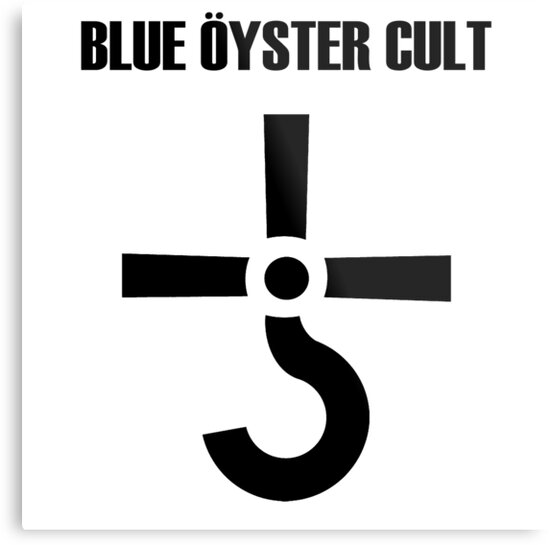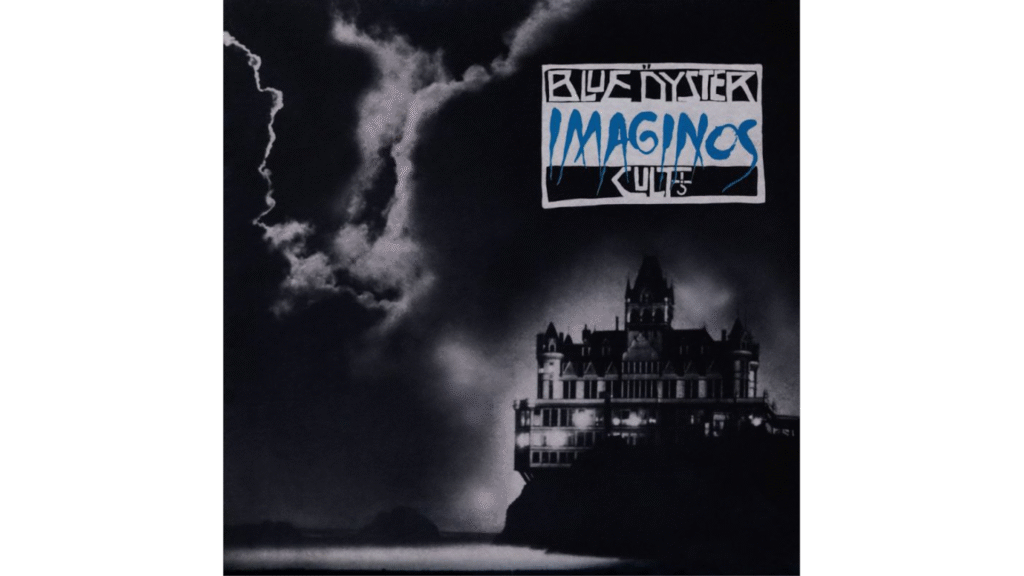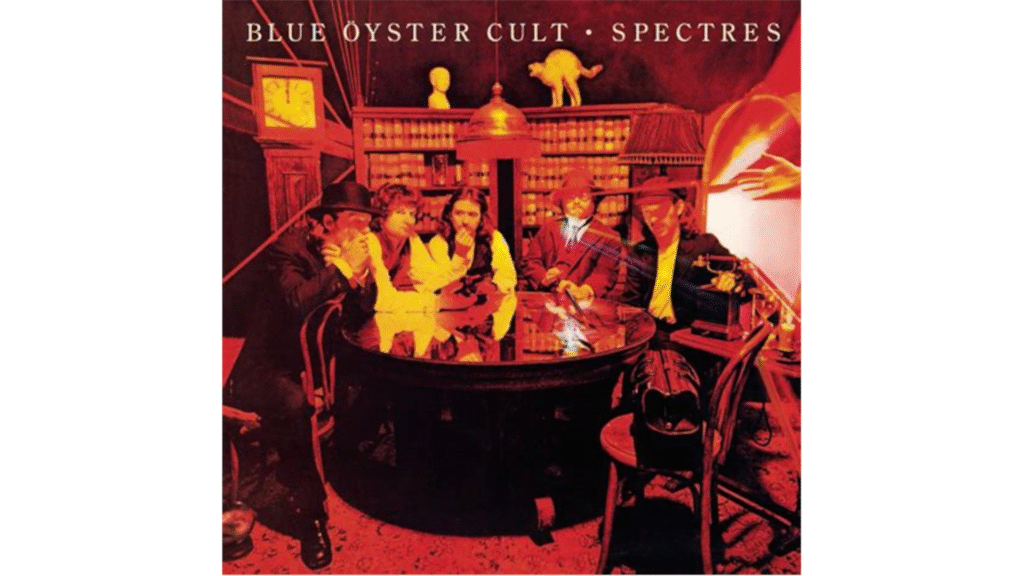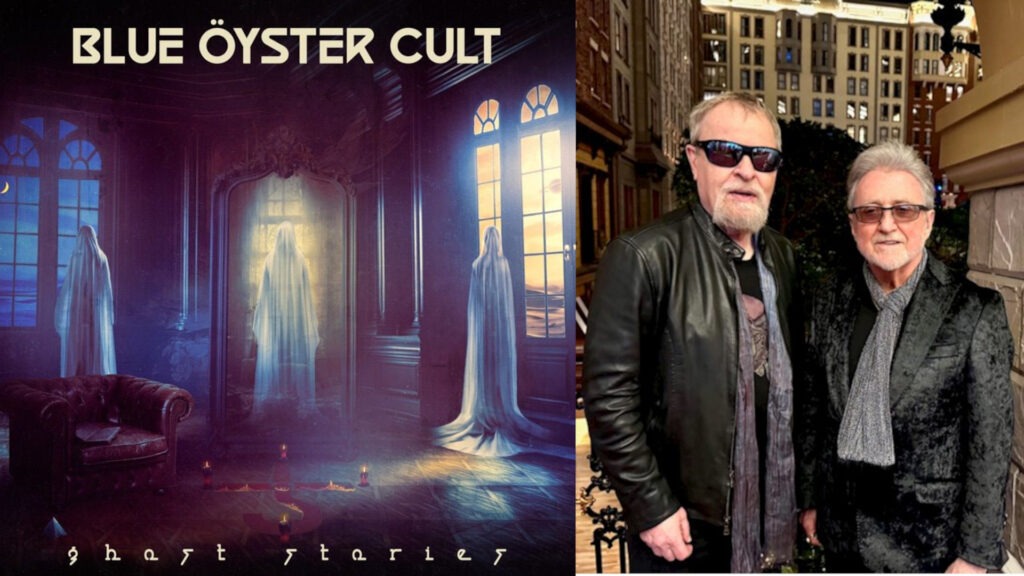Most people know the band Blue Öyster Cult, or BOC for short, from their 1976 six-time platinum hit (Don’t Fear) The Reaper. Others may know the band by their two other hits, including their classic 1977 platinum track, Godzilla or their 1981 two-time platinum hit, Burnin’ for You. Whatever any of us might know about them, the reality is the depths of this band go far deeper than a couple of radio hits. They were much more than that.
Hailing from New York City, the band officially hit the stage as Blue Öyster Cult with their self-titled debut album in 1972. Previous incarnations of the band included Soft White Underbelly, Oaxaca, Stalk-Forrest Group and Santos Sisters. There were a few lineup changes along the way before settling on their final 1970 lineup. These included vocalist Les Braunstein, who departed the band in 1969 just before a record with Elektra Records was completed, and Andrew Winters, on bass, who also left the band after a second attempt to put an album out with Elektra Records failed. The reasons are sketchy as to why these albums never materialized, but the tapes were eventually obtained by Rhino Records and released in 2001, with five-thousand CDs being issued.
The lineup from 1970 until 1981 included Donald “Buck Dharma” Roeser (lead guitar), Albert Bouchard (drums), Alan Lanier (keyboards), Eric Bloom (lead vocals) and Joe Bouchard (bass).

After an unsuccessful attempt to reach a record deal with Columbia Records in 1969, the band was eventually signed to Columbia in July 1971 as an American answer to Black Sabbath and heavy metal. Their first album didn’t gain much traction, only peaking at 172 on the US top 200 Billboard charts. But then again, BOC from the start was not a band writing songs about girls and falling in love, not even remotely close. They were a “thinking man’s band”, as their reputation boasted, leaning on the fringes of the paranormal, including horror and science fiction, as well as being heavily influenced by the drug culture of the time.
If their band name wasn’t unusual enough, they were the first band to use an umlaut, which appears over the letter “O”. They also had a hook and cross symbol appearing on their first album cover, and on all fifteen studio albums they cranked out, albeit sometimes a little hard to spot. The symbol was supposed to represent Kronos, the Greek harvest god, with the symbol being a sickle or scythe, but others have speculated that it could also be a merging of a cross with a question mark, symbolizing the cross of confusion. Whatever artist Bill Gawlik meant for it to symbolize, he incorporated it into the band’s first two album covers.
The first three albums by the band are referred to as the Black and White Years because the album covers are in black and white except for a splash of red on the pyramid on Tyranny and Mutation and the band name appearing in red on Secret Treaties. Secret Treaties is also the first time images of the band appear in an album cover design. They are hand-drawn characters standing beside a Messerschmitt Me 262 WWII fighter jet.

Buried on these first albums are songs that have fragments of a collection of poems and scripts written by manager Sandy Pearlman during his university years called The Soft Doctrines of Imaginos. This weaving of some of the storyline throughout the first four albums is not only where the band got their name from, as far as Pearlman’s storyline goes, but is also where they got their title as a “thinking man’s band”. The complicated and bizarre story was heavily influenced by the writings of H. P. Lovecraft, an early 20th century American horror, fantasy and science fiction writer.
The story in a nutshell is based on an alien conspiracy that takes place over the course of the late 19th and early 20th centuries through the actions of Imaginos, an agent of evil. The original concept was supposed to be a trilogy of three albums to tell the entire story of Imaginos, however, until Albert Bouchard completed the project on his own, between 2020 and 2023, the Imaginos studio album was as close as any Blue Öyster Cult fan ever got to understanding it. Columbia Records dropped the band, and the agreement to record all three albums, after the 1988 studio album, the first in the trilogy, didn’t find any success.

While it might seem that the band’s focus during the early years was on recording songs encompassing the Imaginos narrative, the real story is the band had a folder of Pearlman’s poems and scripts in the rehearsal room and would use parts of the works to compose their songs. How much they used of the original work is anyone’s guess, but I’m sure a listen to Albert Bouchard’s Imaginos trilogy would shed more light on it.
By 1975, the band made a move away from the idea of Imaginos and started looking at trying to garner some commercial success. They weren’t exactly taking the US Billboard chart by storm and needed something to break through. The breakthrough came with the release of their first live album, On Your Feet or on Your Knees. The album went gold and reached number twenty-two on the US Billboard charts. Their highest album chart position in their career.
Following the success of their live album, the band released Agents of Fortune in May 1976 with its chart-topping single (Don’t Fear) The Reaper, reaching number twelve on the US Billboard and going six times platinum. The album was also certified platinum in July 1978. The story behind Reaper, as stated by Donald Roeser himself, was after being diagnosed with a heart condition, he was thinking of his own mortality and got the idea of how love can transcend death.
With the success of Reaper and its heavy rotation on radio stations, Blue Öyster Cult saw an increase in ticket sales, as they began incorporating lasers into their live shows starting on the Spectres tour. Their 1977 Spectres album included another platinum track composed by Donald Roeser titled Godzilla. The album cover features lasers shooting out from behind and in front of the band, seated at a dining room table, and if you can find the band’s symbol on this album cover, you have eagle eyes (hint: bottom left).

Another live album titled Some Enchanted Evening, released in 1978, gave the band their second platinum album after Agents of Fortune. But the next two studio albums, Mirrors, released June 1979, and Cultösaurus Erectus, released June 1980, didn’t fare as well. Mirrors took a more commercial approach and lacked the grit and dark sound they harnessed on their previous five albums. Cultösaurus Erectus took a U-turn back to the BOC “sound,” but the album did not reach gold status despite having engineer/producer Martin Birch (Deep Purple, Rainbow, Iron Maiden) behind the console.
This was not the case for their June 1981 Fire of Unknown Origin release, again with engineer/producer Martin Birch. This album spawned the radio hit, Burnin’ for You, which went two-times platinum. The album itself was certified Gold and peaked at number twenty-four on the US Billboard 200 record charts. Many of the songs on the album were to be included in the classic animated film, Heavy Metal, but only Veteran of the Psychic Wars, co-written with science fiction writer Michael Moorcock, made the cut, despite Vengeance (The Pact) being written by the Bouchard brothers specifically for the movie.

Sadly, Fire of Unknown Origin was the last studio album that would feature the original lineup as the band fired Albert Bouchard early on during the tour. The band closed out the 1980s with three more albums: The Revölution by Night, Club Ninja and Imaginos. Unfortunately, none of these three albums had much success, charting at 93, 63 and 122 on the US Billboard charts.
By the time the nineties came around, the band had run its course and most of the original lineup had moved on to other projects. Keyboardist Alan Lanier died on August 14, 2013, forever ending the possibility of the original lineup touring again. Eric Bloom and Buck Dharma have been carrying the BOC legacy, with occasional appearances by the Bouchard brothers.
BOC released their fifteenth and final studio album in April 2024, called Ghost Stories. It features material recorded between 1978 and 1983 that was demixed and then remixed to bring the songs into the digital realm. Existing members of the original lineup overdubbed some of their parts, including the Bouchard brothers and current keyboardist/guitarist Richie Castellano, to help complete the unfinished songs.

With a history spanning fifty-three years, no one can ever say that Blue Öyster Cult didn’t give it their all. It’s a shame that this band wasn’t bigger than they were, and maybe they could have been after regaining momentum with Fire of Unknown Origin, but sometimes things don’t work out, especially in the music business. What we are left with is one of the most prolific bands of the 1970s, putting out eight studio albums in less than ten years and selling out arenas on both sides of the Atlantic Ocean.
Blue Öyster Cult has cemented its legacy in rock history as a band of firsts on many fronts and will remain one of the greatest rock bands to have come out of New York City and, more importantly, will always be remembered as a band who didn’t sell out.
Authors Note:
If you’re looking to do a deep dive into everything BOC, check out Hot Rails to Hull a BOC Gig / Setlist / Review archive.

Be First to Comment